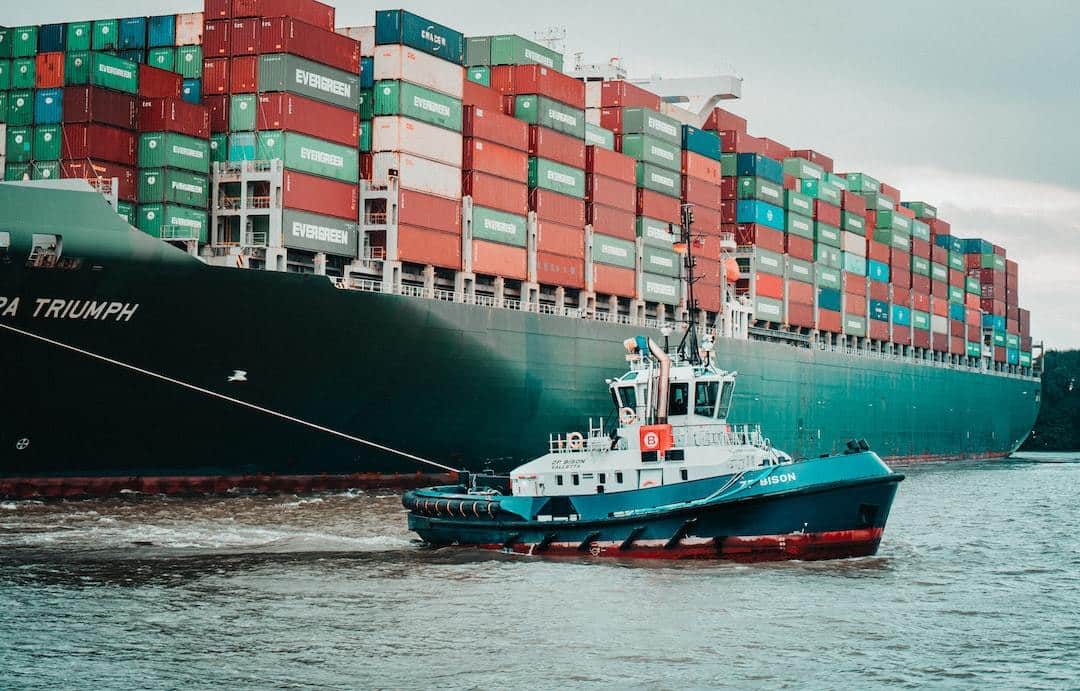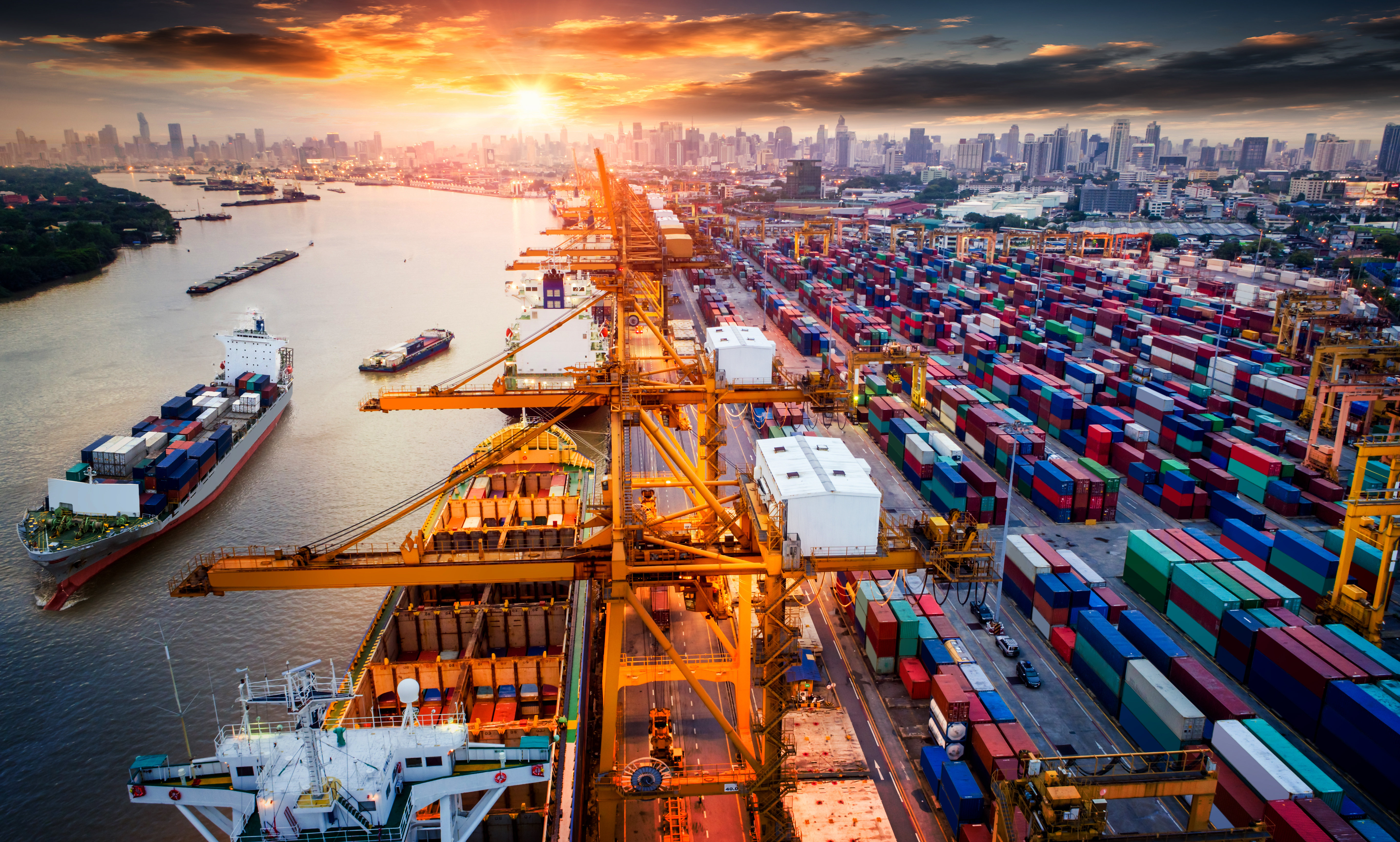Estimated reading time: 16 minutes
Picture this: you’re trying to fortify your home with the latest security systems. But there’s a catch. Global shortages are leading to significant obstacles in the delivery of goods worldwide.
You can’t get what you need when needed – all because of 2024 Security Supply Chain Disruptions. The shelves are empty, prices have soared, and the delivery wait times stretch indefinitely even if money were no object.
It sounds like a scene from a dystopian movie, right? Unfortunately, it could be our reality soon enough. So, how do we navigate through such tumultuous waters?
This post offers practical insights into these anticipated disruptions and ways to secure reliable protection amidst global shortages. We’ll delve deep into strategies for tackling manufacturing footprint changes caused by chain disruption issues while addressing the impact of geopolitical conflicts on supply chains.
Table Of Contents:
- Understanding 2024 Security Supply Chain Disruptions
- Impact of Supply Chain Disruptions on Physical Security for the Affluent
- Securing Reliable Security Systems Amidst Global Shortages
- Leveraging Technology for Robust Protection in a Recessionary Environment
- Strategic Risk Management in the Face of Climate Change Weather Events
- Navigating Port Holdups and Ocean Freight Availability Challenges
- Ensuring Agile Security Operations in a Changing Supply Chain Landscape
- FAQs about 2024 Security Supply Chain Disruptions
- Conclusion
Understanding 2024 Security Supply Chain Disruptions
The forecast for supply chain operations in 2024 isn’t rosy. A cocktail of geopolitical conflicts, inflationary pressures, and climate change weather events are stirring up a storm. And it could lead to significant disruptions.
But don’t fret just yet. This presents a critical opportunity to re-evaluate our strategies and bolster our defenses against these threats. Remember – every challenge is an opportunity waiting to be seized.
Predicted Causes of Disruption
Indeed, you’ve heard the phrase “forewarned is forearmed.” So, let’s dive into some causes predicted to disrupt global supply chains in 2024.
- Geopolitical Conflicts: Tensions between nations can impact cross-border trade cooperation, leading to port holdups, reduced container availability, ocean freight challenges, and surge prices.
- Inflationary Pressures: Due to their volatility, these have the potential to morph rapidly, causing unexpected hiccups in distribution supply chains.
- Climate Change Weather Events: Climate change isn’t only melting ice caps and causing severe hiccups in key material access, primarily due to weather patterns disrupting transport routes or damaging infrastructure.
Navigating through Stormy Seas
No one said sailing through this sea would be easy – there would be storms ahead; there might even be pirates (read: cybercriminals). But with careful planning capability using innovative technology investments, we can chart a course around these challenges.
So, how do we tackle these supply chain risks? One approach is to have a mature supply chain planning capability. You can adjust your operations by staying ahead of the curve and forecasting potential disruptions. It’s like having a crystal ball – but powered by data.
The Silver Lining
There’s a silver lining in every cloud – even in this case. This disruption presents us with an opportunity to become more environmentally conscious consumers. Businesses must also strive to find sustainable solutions that will help lower their carbon output.
Impact of Supply Chain Disruptions on Physical Security for the Affluent
In 2024, supply chain disruptions are set to shake up global operations in a big way. But what does this mean for physical security measures tailored to affluent individuals and communities?
The Role of Material Access Turmoil in Security Measures
Accessing critical materials is essential when it comes to maintaining robust security systems. Unfortunately, supply chain disruptions can make this task significantly more challenging.
World Bank studies show these disturbances can impact access to goods needed for state-of-the-art security equipment production. The result? A knock-on effect that leads to price surges and potential compromise in safety standards.
A prime example is how port holdups have already started causing global ripples due to such issues. These holdups reduce container availability and drastically affect ocean freight services – crucial components for distributing high-tech surveillance gear and other vital protection tools.
Navigating the Wave of Price Surges
No one likes surge prices – but imagine them hitting where it hurts most: your personal safety apparatuses. An unexpected jump in cost could lead many clients towards less effective options simply because their usual choices are suddenly out of reach financially.
We’ve seen first-hand how even small changes within international trade cooperation agreements create significant shifts across global supply chains—ultimately impacting material access—thus shaping our world’s protective barriers around those needing them most.
Cyber Criminals Exploiting Vulnerabilities
You might think cyber criminals would stick solely with digital heists or data breaches, but you’d be wrong. With increased disruption in supply chains, there’s been a noted uptick in cyber-attacks targeted at these vulnerable systems.
When physical security measures falter due to material shortages or delayed shipments, affluent individuals and communities become more susceptible to these threats. In short, it’s not just the tangible assets in danger; even virtual ones aren’t safe.
Securing Reliable Security Systems Amidst Global Shortages
With nations becoming more skeptical about cross-border trade cooperation, 2024 presents unique challenges for maintaining reliable security systems. But fear not, as every challenge is a critical opportunity in disguise.
We must get creative and strategic in tackling supply chain disruptions to safeguard our affluent clients’ assets and lives during these global shortages. The key lies in understanding the changes occurring within manufacturing footprints.
Tackling Manufacturing Footprints Changes
The face of production has been morphing rapidly due to material access turmoil caused by supply chain disruptions. Regarding security systems, the components needed for assembly may become scarce or inflated in price.
But here’s where things start getting interesting – remember when I mentioned seeing each challenge as an opportunity? Well, if your traditional materials are rigid to get hold of because they’re stuck at some port holdup or ocean freight availability issue arises from geopolitical conflicts, then why not look elsewhere?
Sourcing alternative materials can be just what you need. It could even open up doors for innovation within your product design while keeping surge prices at bay.
We must also give a nod to environmentally conscious consumers who are increasingly demanding products made from sustainable sources. Hence, there’s never been a better time to reconsider your manufacturing footprints.
Mature Supply Chain Planning Capability: A Necessity Not Luxury
A mature supply chain planning capability is no longer a luxury but necessary amidst uncertainties caused by inflationary pressures and climate change weather events. Being appropriately prepared for these disruptions will safeguard your operations and help maintain the trust of clients who depend on you for security.
One such strategy to consider is increasing supply chain technology investments. With a solid investment, one can effectively monitor key supply chain trends, predict possible issues before they escalate, and respond quickly when disruptions occur.
The Power of Global Operations Centre
The center is always ready to act, ensuring the organization stays on track despite unforeseen events.
Leveraging Technology for Robust Protection in a Recessionary Environment
In light of the ever-changing global landscape, technology utilization has become required to ensure robust protection in recessionary conditions caused by supply chain issues. This holds especially when considering strong protection in recessionary environments triggered by supply chain disruptions.
The price surge and material access turmoil force security firms like Global Risk Solutions, Inc. to rethink their strategies. It has become evident that accelerated supply chain technology investments can provide some much-needed stability during these uncertain times.
Addressing Geopolitical Conflicts Impact on Supply Chain
A notable disruptor of the global supply chains has been geopolitical conflicts. These altercations often lead to unpredictability, causing massive fluctuations within the trade sector.
To mitigate this impact, companies need innovative solutions. For instance, advanced AI-based predictive analytics tools can help forecast potential roadblocks and prepare contingency plans accordingly. According to KPMG, adopting such proactive measures could be critical as nations grow more skeptical about cross-border trade cooperation in 2024.
Tech-Savvy Security Systems: A Shield Against Disruptions
In our digitally driven world, where cyber criminals pose increasing threats alongside physical dangers, tech-savvy security systems have emerged as resilient protectors against both risks. Technology offers myriad ways to ensure safety regardless of external challenges, from cloud-based surveillance networks providing uninterrupted monitoring even amidst distribution supply chain disruptions to innovative alarm systems with backup power options tackling energy shortages.
Maintaining Vigilance through Advanced Monitoring Solutions
Few things compare with real-time information when navigating tumultuous times. That’s where advanced monitoring solutions come into play, letting businesses stay on top of changing scenarios and adapt accordingly.
Advanced surveillance systems using AI and Machine Learning can help detect potential threats or unusual activities in real time. Such technologies increase the efficiency of security operations and ensure that safety measures are agile enough to withstand rapid changes within supply chains.
The Silver Lining: Opportunities for Innovation
The rise of innovative, green solutions. Amidst these trying times, it allows us to reconsider our strategies and craft items that are not only practical but also more eco-friendly.
Strategic Risk Management in the Face of Climate Change Weather Events
The increasing unpredictability of climate change weather events poses a critical opportunity for strategic risk management within supply chain operations. More so, it’s been predicted that these changes are among the factors expected to disrupt supply chains in 2024.
The Role of Scope 3 Emissions Scrutiny
To effectively manage risks associated with climate-induced disruptions, scrutinizing scope three emissions is essential. This process is integral as businesses become more environmentally conscious due to consumer demands and regulatory pressures.
Scope 3 emissions account for all indirect emissions not covered under Scope one and Scope two categories – primarily those resulting from your upstream and downstream value chain activities. By closely monitoring these emissions, organizations can anticipate potential challenges tied to environmental impact access turmoil or distribution hiccups along their supply chains caused by severe weather conditions.
An example could be sudden flooding disrupting material transport routes, leading to turmoil in key material access. This would knock on manufacturing footprints globally while also exacerbating surge prices as demand outstrips constrained supplies.
Research shows that successful firms tend to consider such nuances when planning their strategy – using mature supply chain planning capability tools like predictive analytics alongside robust mitigation plans tailored to minimize downtime during extreme weather scenarios.
Mitigating Supply Chain Disruptions Amidst Climate Change
In addition to scrutinizing greenhouse gas outputs, other methods must be employed as part of comprehensive strategic risk management practices amidst volatile climatic patterns. “Tackle them before they tackle you,” says any seasoned business strategist. This rings especially true for supply chain risks from climate change weather events.
Companies can, for instance, leverage technology investments in artificial intelligence and machine learning to predict and prepare for potential disruptions. These technologies provide critical data that helps businesses adapt their operations quickly when confronted with unexpected situations such as extreme heatwaves or cold snaps disrupting distribution supply chains.
There’s strong evidence from various studies. This critical research sheds light on many things we didn’t understand before.
Navigating Port Holdups and Ocean Freight Availability Challenges
Challenges can create significant headaches regarding supply chain disruptions, port holdups, and ocean freight availability. Disorders may trigger events that impede the movement of goods, resulting in clogged ports worldwide.
This problem is compounded by reduced container availability. Without enough containers, ships cannot be loaded efficiently – even when goods are ready for transport.
Overcoming Trade Cooperation Skepticism
In this global game of chess, one crucial factor exacerbates these issues: skepticism about cross-border trade cooperation. With nations more protective over their resources due to geopolitical conflicts and other concerns, as highlighted in KPMG’s report, getting products from point A to B has become increasingly complex.
To tackle these challenges head-on, we need strategy and flexibility. A solid plan helps anticipate potential hurdles before they happen while maintaining agility allows for quick adjustments when unexpected changes occur along the supply route.
The first step towards building resilience against such setbacks is understanding critical global supply chain trends; climate change weather events creating havoc with shipping schedules or cyber criminals targeting logistic systems add another layer of complexity into an already convoluted process.
But fear not. Even amidst this chaos, there lies opportunity…
A Critical Opportunity Amidst Chaos
- Mature Supply Chain Planning: Adopting mature planning capabilities helps businesses stay ahead of any potential threats arising from disruption within distribution channels, thereby reducing risk exposure considerably.
- Investment in Supply Chain Technology: Harnessing the power of technology and investing in innovative solutions can streamline operations, increase efficiency, and ultimately mitigate the impact of supply chain disruptions. These include AI-powered forecasting tools or blockchain for enhanced transparency across global operations.
- Tackling Supply Chain Risks: With risks ranging from geopolitical conflicts to cyber threats, businesses must continuously monitor these factors and adjust their strategies accordingly.
Looking at different shipping options is critical to effectively dealing with port holdups. So, start exploring ways to mix up your shipping strategies.
Ensuring Agile Security Operations in a Changing Supply Chain Landscape
The year 2024 brings with it fresh challenges for global supply chains. But one thing remains clear: agile security operations are more critical than ever, especially considering the surge in activity by cybercriminals.
Navigating Through Cyber Threats and Material Access Turmoil
Cyber threats pose an increased risk to secure supply chain operations. These bad actors exploit disruptions, such as geopolitical conflicts and inflationary pressures, causing further turmoil in material access.
With ocean freight availability reduced due to port holdups, even getting your hands on essential resources can feel like running through a maze blindfolded.
Acing Agility Amidst Rapid Changes
To combat these disruptive forces successfully requires agility at its finest. It’s akin to changing the tires of a racing car while still moving at full speed – it sounds wild but entirely necessary.
An organization’s response must morph rapidly to tackle supply chain risks effectively. A mature supply chain planning capability is crucial here; think of it as having GPS navigation during that high-speed tire change we discussed earlier.
Leveraging Technology Investments For Robust Protection
Technology investments play a pivotal role in ensuring robust protection amidst this chaos, from advanced threat detection systems that spot cyber intruders faster than you can say “supply chain disruption” to AI-driven predictive models for identifying potential bottlenecks before they cause significant hiccups.
This isn’t just about throwing money at shiny new tech toys; it involves strategically using these tools to navigate the ever-changing landscape. The key is to utilize tech rather than being controlled by it.
Adapting to Climate Change Weather Events
The climate change weather events are another wrench thrown into our already complicated equation of supply chain management. Floods and hurricanes can cause delays that ripple across entire networks, while heatwaves can affect production capabilities.
It’s like trying to play chess in a hurricane – challenging but not impossible with proper planning and risk management strategies.
FAQs about 2024 Security Supply Chain Disruptions
What are the disruptions in the supply chain in 2024?
In 2024, supply chains face potential disruption from geopolitical conflicts, inflationary pressures, and climate change weather events. These factors can create port holdups and reduce ocean freight availability.
What is the biggest threat to supply chain security?
The biggest threats to supply chain security include access turmoil due to global shortages and increased cyber criminals’ activity, impacting reliable systems’ production.
What are the supply chain issues with cyber security?
Cybersecurity issues pose a significant risk as hackers exploit vulnerabilities within interconnected systems, potentially causing severe damage or loss across multiple sectors of a business’s operations.
What are the challenges of the supply chain in cybersecurity?
The main challenge is ensuring robust protection amidst changes in manufacturing footprints caused by disruptions. This requires strategic planning and leveraging technology investments effectively.
Conclusion
Are you bracing for the 2024 Security Supply Chain Disruptions? We’ve got you covered.
Navigate disruptions, yes. By understanding their causes and impacts, absolutely. Material access turmoil? You can manage it. What is the importance of strategic planning? It’s critical!
Tackle manufacturing footprint changes with confidence. And those geopolitical conflicts messing with your supply chain – there are tech solutions to mitigate that.
Risk management in the face of climate change weather events is possible, too! Remember, scope three emissions scrutiny plays a vital role here.
In dealing with port holdups and ocean freight availability challenges – don’t let trade cooperation skepticism pull you down.
Lastly, ensure agile security operations amidst these rapid changes because cyber criminals won’t wait for anyone!














